Vidin Bulgaria: a snapshot in time.
Romans, Bulgars, Turks and Jews; Walls, a Castle, Tombstones and a Synagogue
The Danube divides the Carpathian Mountains at the Iron Gates, then spreads out, defining the southern border of Romania and the northern border of Bulgaria.
We awoke on the southern bank of the Danube in Bulgaria, with Romania just across the river.
Bulgaria, Land of the Bulgars. Who were these people, and who are they now? Where did they come from, where have they been, and where are they going? What can we learn from their experience and their history? These are some of the questions I hope to answer in the next few days.
Bulgaria itself is divided by the Balkan mountains, with the Danube draining the northern half, flowing to the Black Sea, while the Bulgarian land to the south of the Balkans finds its way through Greece and western Turkey to the Aegean.
The Cyrillic script, based on the Greek alphabet, is used here, as it is in Serbia, Macedonia, Russian, and the Ukraine, immediately reminding you that this isn’t Kansas anymore.
While the tours have been interesting, and the guides informative, I wanted to get a more personal view of this country, so I headed off the Viking Ship to explore.
The Romans conquered the area in the 1st century and built a fort here on the Danube. The city became the capital of the Vidin Province, which extends south and west to the Serbian border, defined by the peaks of the Balkans.
A wide pedestrian walkway extends away from the river, then curves to the right. The bright blue skies had lured mothers and grandmothers with strollers, while the grandfathers watched from sun-warmed benches.
Soon I came upon an old gate. Then I realized this wide park bordered the outside of an old city wall, built in a semicircle around the castle. Four gates have been preserved.
The wall is called “Kaleto,” meaning stubborn and tough. It was built during the “Long War between the Ottoman Empire and the Hapsburg empire (1683-1699).
Eventually the wide park-like path ended and I could see that the path was formerly a moat, now filled. The wall is substantial. Sharpened sticks were placed in the holes of the wall, providing a difficult barrier for invaders.
The moat and wall extended further, but I headed through a gap, past communist era housing, following a sign pointing to the fortress.


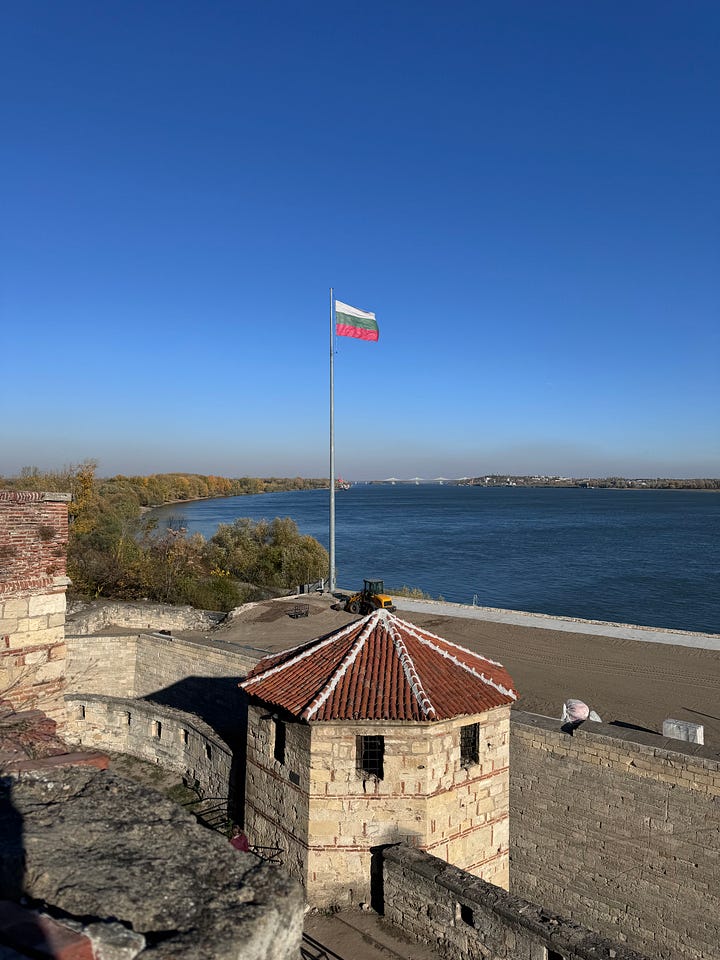
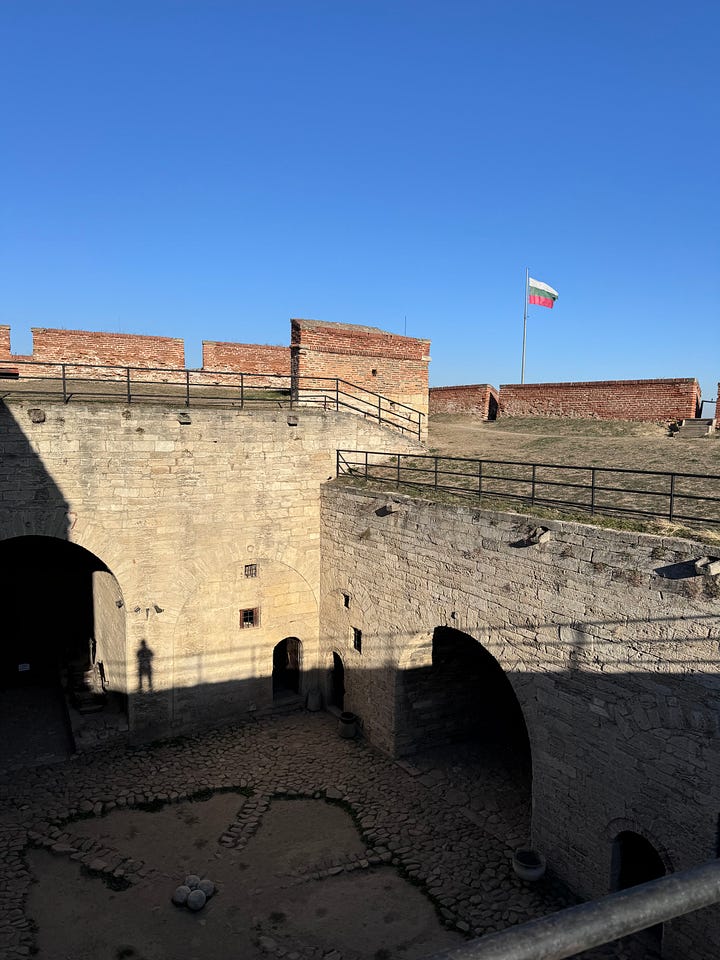
The exterior of the fortress today is well preserved. The first layer of solid Roman construction is topped by a layer of mixed brick and stone, then finished off with brick. The afternoon guide claimed the top layer was constructed by the Turks.
Preservation efforts are still underway. I returned in the afternoon and explored the interior, which is unremarkable, though providing some nice river views and some marble cannon balls.
More interesting to me was the unnamed statue at the top of this post and the archeological museum nearby.
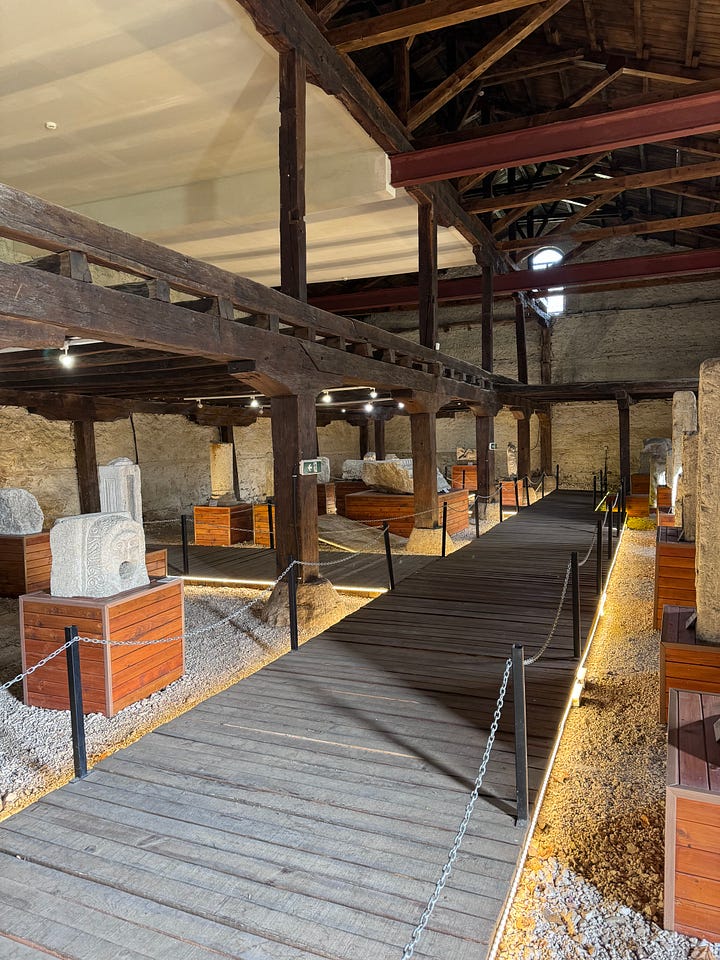
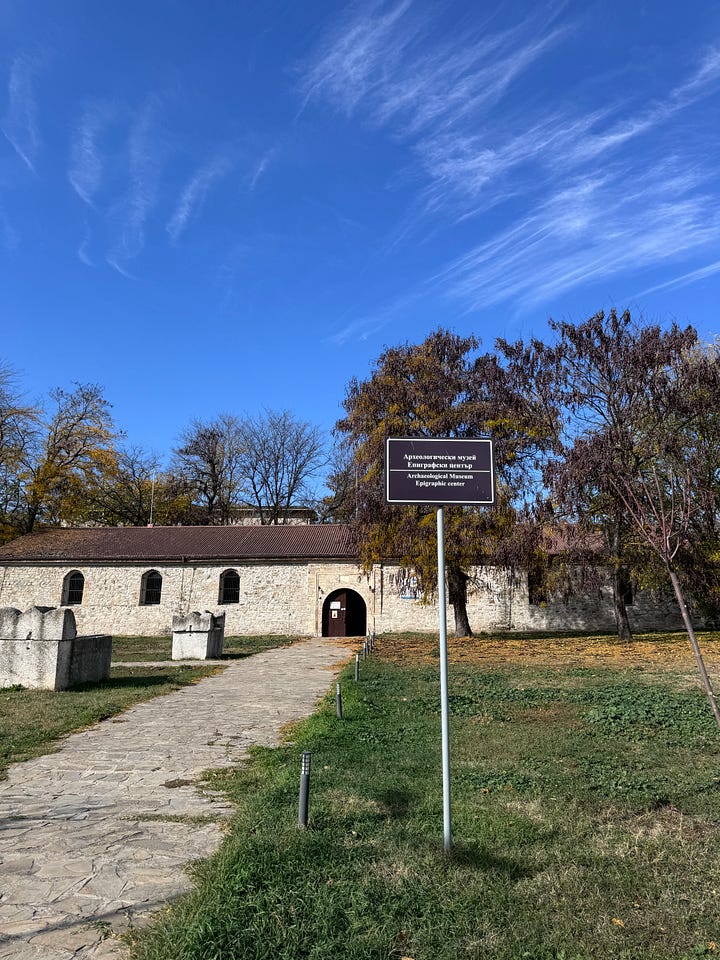
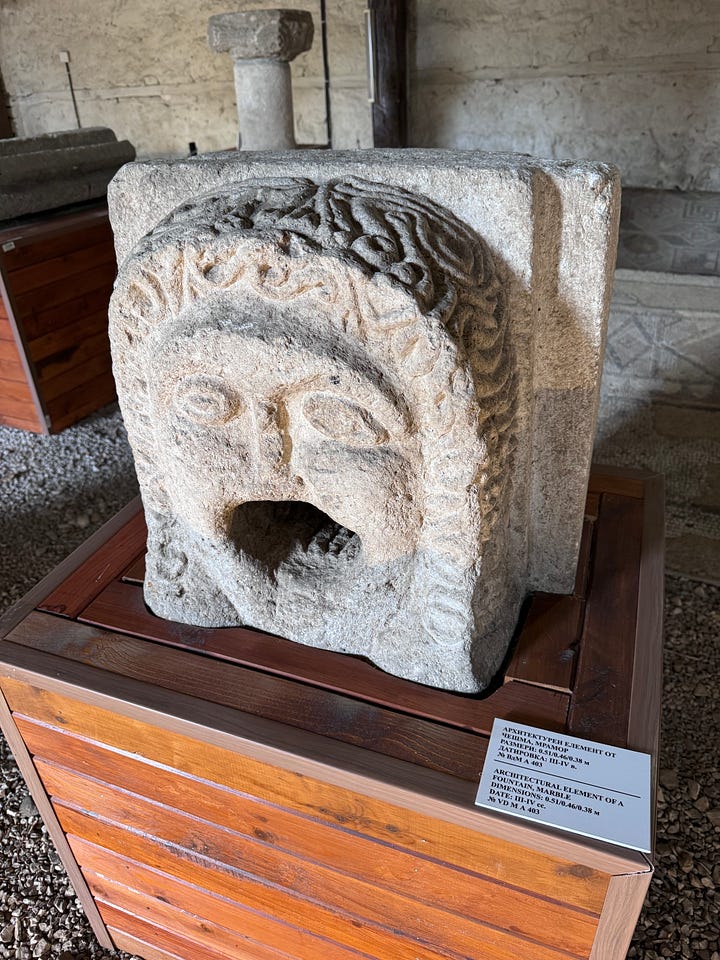
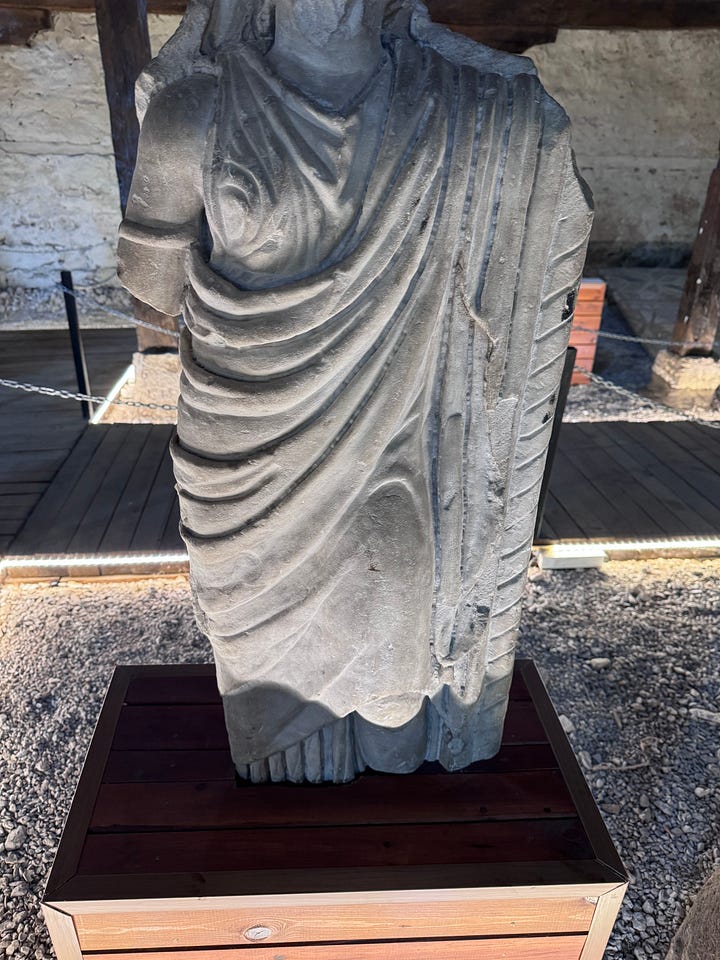
The door to the museum was open and there was no one there. No one. Not a soul.
Basically it is just a former stable in which various tombstones and funerary sculptures have been stored. Here was a strong reminder of the Romans who ruled here, almost as far east from Rome as London is to the west of Rome.
What an Empire!
I remembered the idea, expressed in one of my earlier posts, that the countries of Yugoslavia had benefited from their union, just as the Hapsburg countries. Extending that idea further, I thought of how Roman rule was such a civilizing influence over these far-flung lands.
But the same cannot be said for the Soviet occupation.
It was time to head back to the ship for lunch, an afternoon tour and wine tasting.


As I walked back along the wide pedestrian boulevard, the Danube on my left, I saw a building on my right with a prominent Star of David window. Could it be a synagogue?
Yes! I paid the entrance fee and explored what is now an art gallery and concert venue.
It was amazing. Located in the most prominent spot of the city, facing the fort, it was consecrated in 1894, replacing another damaged by the Russo-Turkish War (1877-1878).
A plaque commemorated the Jews from this Vidin congregation who died serving Bulgaria in the Bulgarian Wars of 1912-1913 (15 names) and 1915-1918 (11 names) Where were the Jews now? I later learned that they have immigrated to Israel.
This Synagogue is beautifully restored and deserves more attention. There are stories here which need to be told.
We are now docked in Russe, Bulgaria. The skies are bright blue and the air is nippy. Time to explore!
Thanks so much for traveling along, for your likes and shares and comments. So happy you are here!






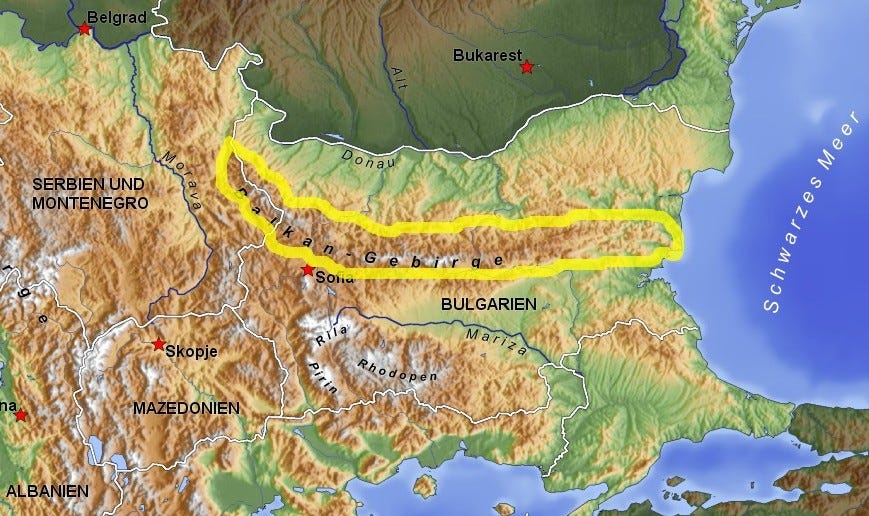
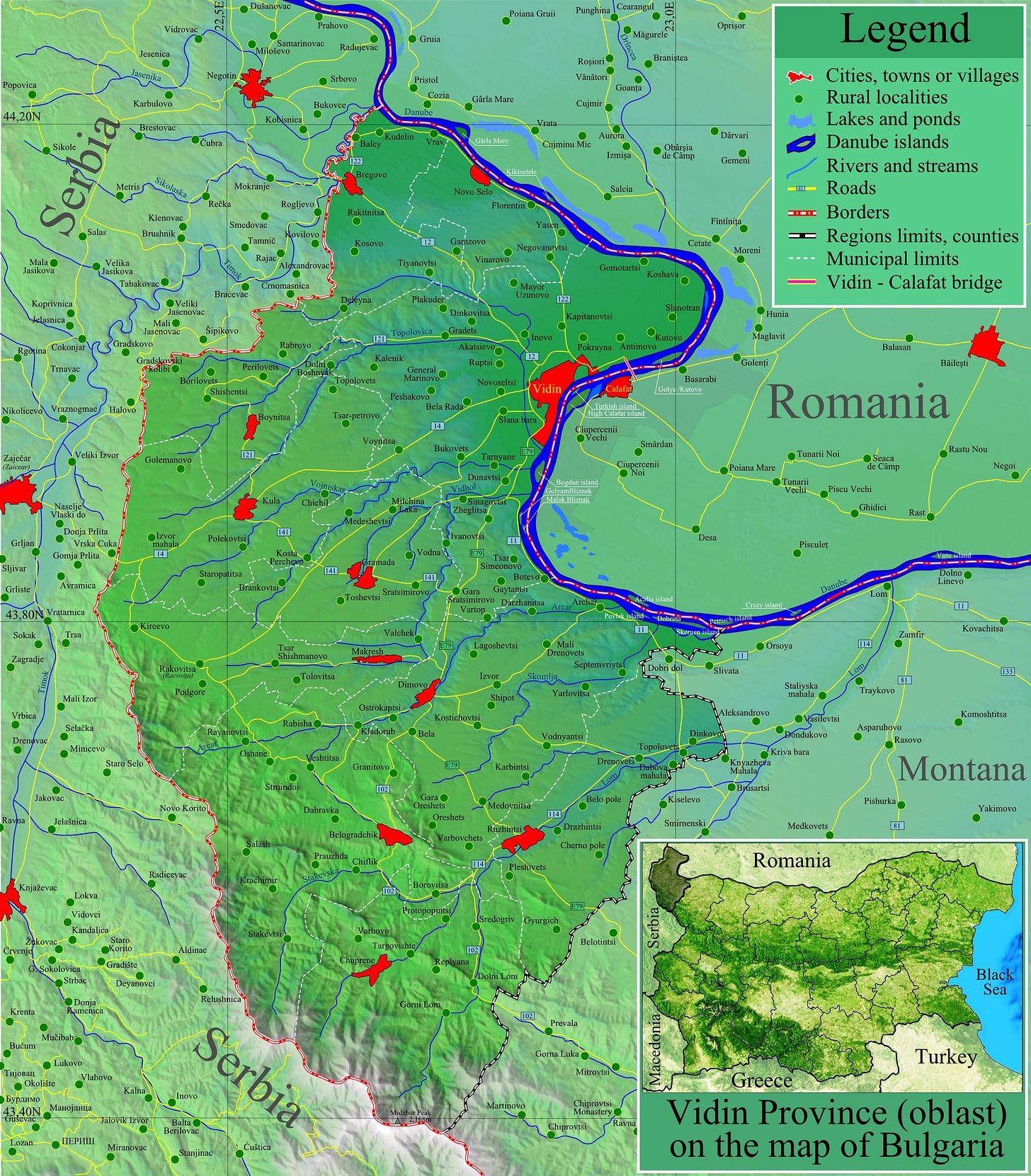



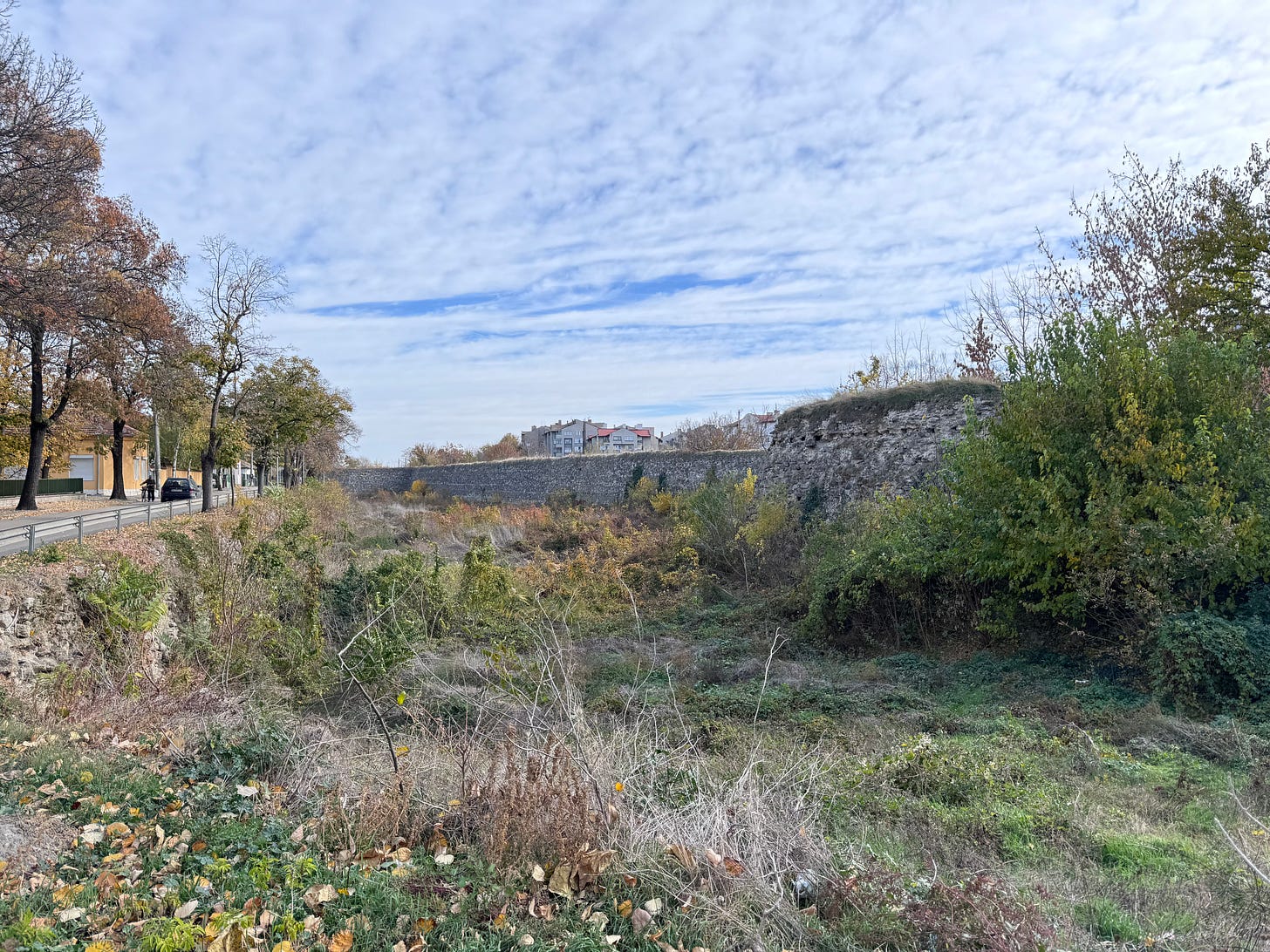
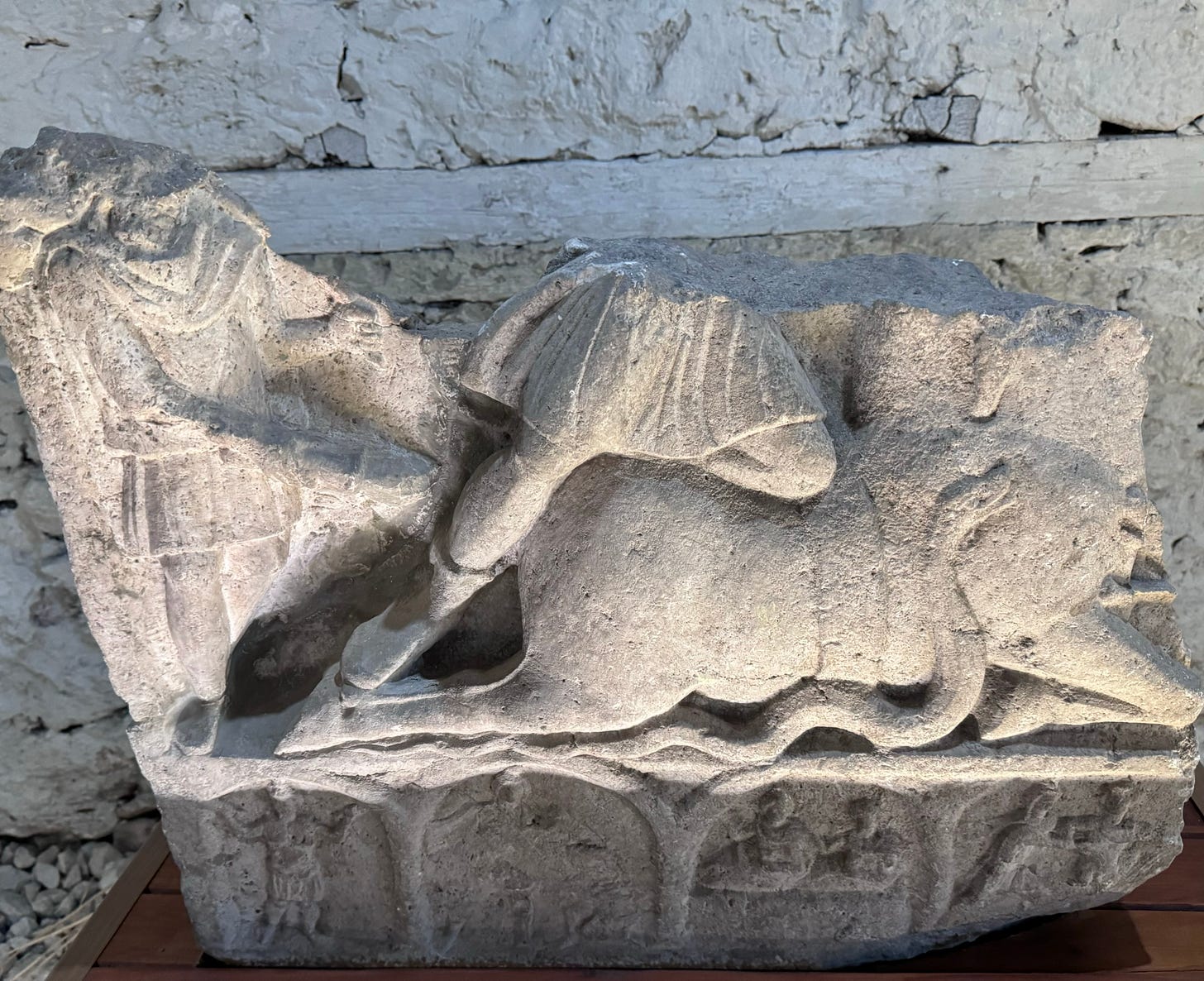
You look like you are having an amazing trip with lots of side explorations. Thank you for sharing all your photos and thoughts. Vicarious trips are so affordable! LoL
A great trip and it just shows you that sometimes the guides don't show everything.